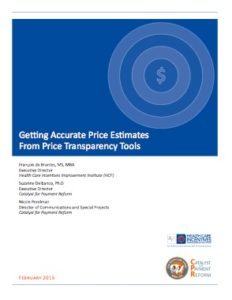Did you know the state of Maryland is home to the nation’s only all-payer, global budget hospital system? Despite the fact that over the years, other states have tried to implement similar approaches. Maryland’s system is the only one still operating. For this reason, many point to Maryland as a leading example of state-based innovation and pose the question of how others may be able to replicate its success. To better understand the nuances of Maryland’s unique system, let’s take a look at its history and its latest design elements.
Working with the Centers for Medicare and Medicaid Services (CMS), Maryland first launched an all-payer hospital-rate setting system in the 1970s. State legislation enacted in 1971 enabled the approach. A hospital-rate setting system requires the state to establish payment rates for all hospitals on behalf of all public and private payers in the state. Achieving buy-in for this approach in today’s health care landscape would be incredibly difficult and helps explain why others struggle to replicate Maryland’s system. More recently in 2014, Maryland added a global budget cap to the all-payer system, after first piloting the model with 10 rural hospitals in 2008. The global budget cap focused on inpatient hospital services. Under a global budget approach, the state identifies a total annual budget for hospital spending. Thus, yearly spending and hospital charges must meet the approved global budget. Within this budget hospitals continue to receive fee-for-service payments. The global budget model aims to incentivize more deliberate spending decisions, to utilize health services appropriately, and to improve quality of care across the system. To date, Maryland continues to contain costs below the national average. However, it may be too early to accurately gauge the overall impact of the program.
As of January 1, 2019, Maryland will introduce a new element to the existing model. The extension, titled Maryland Total Cost of Care (TCOC), will incorporate outpatient hospital care. The inclusion of outpatient care shifts Maryland’s system towards a focus on population health and incorporating other care delivery settings, rather than relying only on hospitals. TCOC is planned to be tested in Maryland from 2019 to 2026 and projects Medicare savings over $1 billion in total by the fifth year of operation.
Maryland’s unique approach has evolved over time to align with industry trends. As consumers have become increasingly distrustful and demanding of health systems, providers are being prompted to consider alternative approaches to optimizing care delivery and streamlining costs. The stability and transparency of Maryland’s experimental history with all-payer models and global budgets provides tangible examples for states and industry stakeholders to learn from.
For example, Vermont’s OneCare has recently implemented the use of an all-payer, accountable care organization model. While savings are difficult to project at an early stage, both Maryland and Vermont’s approaches demonstrate innovative state-level efforts aimed at addressing rising health care costs and unnecessary service utilization.

